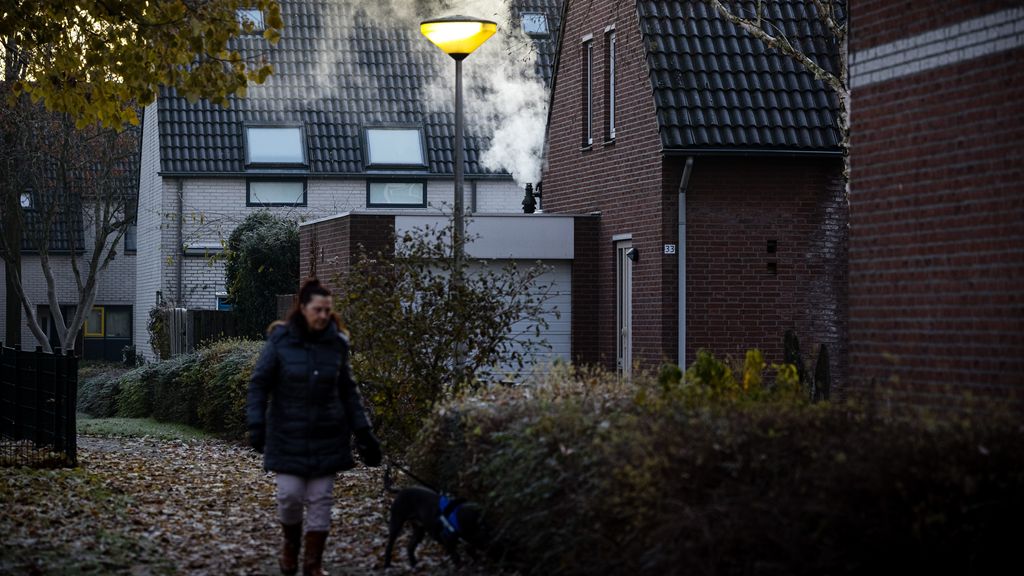Rob Engeler
ANNOUNCEMENTS•
Gas prices have returned to pre-Russian levels in Ukraine. This makes it more than four times lower than the peak in August. The price is now 77 euros per megawatt hour. However, that doesn’t mean you’ll feel relief on your energy bill right away—it could take a while.
Five questions about what the current gas price means to you.
Why is the gas price lower now?
This is due to the interplay of supply and demand, says energy expert Lucia van Geuns of the Center for Strategic Studies in The Hague. Now there is a lot of supply and less demand. Also – apart from a good week of freezing cold – it has been a mild winter so far. Furthermore, the gas reserves for this winter are now well filled. More liquefied gas (LNG) is also arriving in the Netherlands.

NO
Why am I still not noticing it on my energy bill?
This is because there is a difference between the current price of gas and the price energy suppliers pay when they buy. So when you notice it on your energy bill depends on your energy supplier.
“Now it’s worth seeing whether there is a cheaper alternative,” says energy expert Joris Kerkhof of price comparison site Independer. “It is true that they are all still variable rates and therefore they can still go up”. Furthermore, the price ceiling reduces the costs of around 60 percent of households. For those guaranteed to be above the price cap, it’s still interesting to compare, says Kerkhof.
According to the latest data from Independer, prices for new customers of energy companies now vary between 1.91 and 3.06 euros per m3. Which is still well above the price which corresponds to the current price on the gas market, which converts to around 0.75 euros per m3.
Can gas prices skyrocket again?
Even the balance between supply and demand can change again. For example, if we face severe frost for a while this winter. “It can turn around pretty fast,” says Van Geuns. “The gas depots need to be replenished in the spring. There seems to be enough supply to meet the gas needs for this winter, but there is still a lot of uncertainty for next winter.”
Van Geuns points out that a lot of gas must come from outside Europe. Liquid gas does not absorb everything. “Asia needs it too.” He also points out that the price of gas is still five times more expensive than at the beginning of 2021.
When will energy companies start giving permanent contracts again?
This happens if the price keeps falling and this happens steadily, says Kerkhof van Independer. “We’ve had huge spikes in one year, which poses risks for suppliers.”
The Dutch Consumers and Markets Authority is also working to increase the so-called cancellation fee when switching to another energy supplier. If it is higher – which reduces the possibility of consumers switching – it should become more attractive for energy companies to offer a permanent contract for more than six months. A spokesman for the regulator says the goal is to complete this system by April 1.
The three biggest energy companies – Essent, Eneco and Vattenfall – tell NOS they are waiting to see if they can start offering long-term contracts again.
What does this mean for inflation?
The cabinet’s energy cap will still dampen inflation on energy bills, explains ING economist Bert Colijn. The gas prices that energy companies now charge are still above the ceiling. It makes the difference mainly for the group of families for which the bill would still exceed this ceiling. It is also important for the government, because the difference between the maximum price and the actual price of gas is smaller and the government therefore has to pay less to the energy companies.
The price of energy also influences the price of food and other product categories. But it’s not true that prices change immediately there too, says Colijn. For example, there is the possibility that companies will raise prices at the beginning of the new year to offset last year’s energy costs. The question is whether there will be a decline later in the year, Colijn is more likely to take into account that prices will rise less rapidly.

A fluctuating gas price: what do you see in the bill?


:strip_exif()/i/2005507740.jpeg?f=meta)